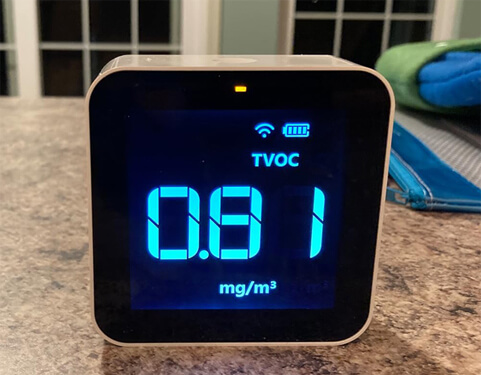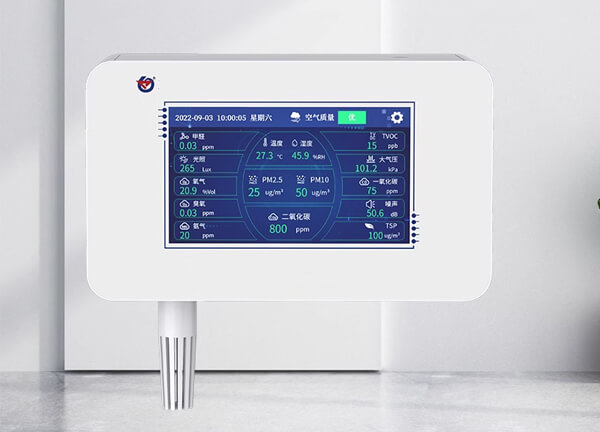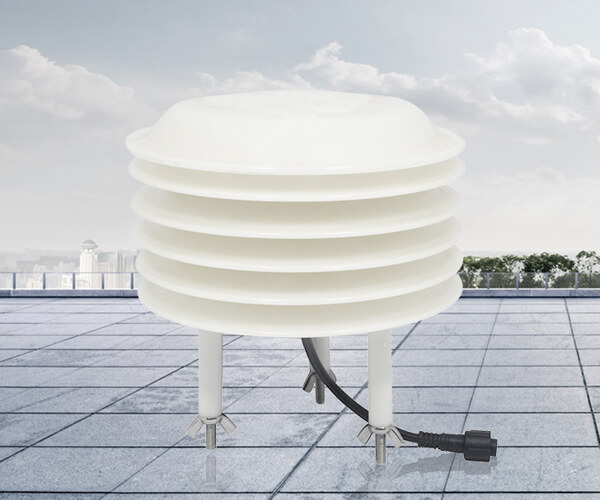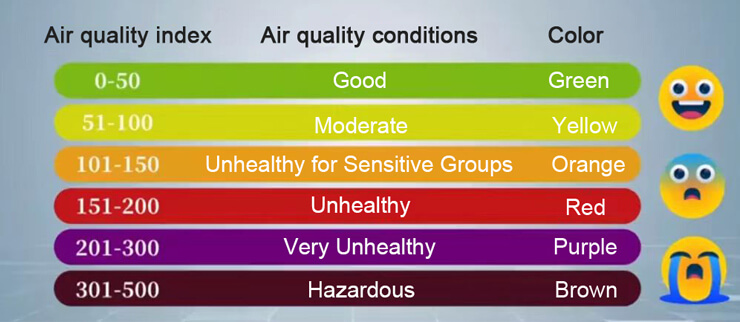
AI POWERED AIR QUALITY SENSORS

INTRODUCTION
An air quality sensor is a device used to detect the concentration of pollutants in the air. It can usually measure two or more air quality indicators such as temperature, humidity, carbon dioxide, carbon monoxide, ozone, formaldehyde, benzene, PM2.5, PM10, etc. It is an important part of the air purifier and fresh air system.
The AI algorithms analyse comprehensive data sets to generate granular insights on air quality, which are then presented through a user-friendly dashboard. This technology allows for an unprecedented level of detail in monitoring pollution levels, transforming the way cities understand and tackle air quality issues.

WHAT IS AIR QUALITY SENSORS MEASURES?
Air quality sensors can usually measure particulate matter (such as pm1,pm2.5, pm10), various gases (such as ozone, carbon monoxide, carbon dioxide, methane, formaldehyde, tvoc, etc.) and some environmental indicators (such as: temperature, humidity, uv, illumination, etc.)

WORKING OF AIR QUALITY SENSORS?
The air quality sensor working principle is to detect gas and particulate matter indicators in the air through optical, electrical, thermal and other methods. For example, the laser scattering principle is used to detect the concentration of particulate matter such as PM2.5 and PM10 in the air, the NDIR non-dispersive infrared principle is used to measure the concentration of carbon dioxide gas in the air, and the electrochemical principle is used to measure the concentration of ozone gas in the air.
Place the air quality sensor in the measurement area, and the sensor will automatically collect pollutant data and transmit the data to the data processor for processing. The data processor can convert the data into visual charts or numbers to let users understand the air quality situation.
TYPES OF AIR QUALITY SENSORS:
Air quality sensors are devices that monitor and measure various pollutants in the air to assess environmental and indoor air quality. These sensors can be classified based on the type of pollutants they detect and their working principles. Below are the main types:
1. Gas Sensors
These sensors detect and measure specific gases in the atmosphere, commonly used for pollution monitoring.
Types of Gas Sensors:
- Electrochemical Sensors
- Detect gases like CO (carbon monoxide), NO₂ (nitrogen dioxide), SO₂ (sulfur dioxide), and O₃ (ozone) by measuring the electric current generated by gas reactions.
- Used in industrial and urban air monitoring.
- NDIR (Non-Dispersive Infrared) Sensors
- Measures CO₂ (carbon dioxide) and CH₄ (methane) using infrared absorption.
- Found in indoor air quality monitors and HVAC systems.
- Photoionization Detectors (PID)
- Detects volatile organic compounds (VOCs) by ionizing gas molecules with UV light.
- Used for detecting harmful gases in industrial and environmental applications.
- Metal Oxide Semiconductor (MOS) Sensors
- Measures gases like CO, NO₂, and VOCs through resistance changes in metal oxide films.
- Commonly found in compact air quality monitoring devices.
2. Particulate Matter (PM) Sensors
These sensors measure airborne particles that can impact respiratory health and environmental conditions.
- Laser Scattering Sensors
- Detects PM1.0, PM2.5, and PM10 by analyzing how particles scatter laser light.
- Used in air purifiers, smart city monitoring, and personal air quality meters.
- Gravimetric Sensors
- Collects particles on filters and weighs them for accurate pollution analysis.
- Used in official environmental monitoring stations.
3. Humidity and Temperature Sensors
- Measures relative humidity and temperature, which influence air quality and pollutant behavior.
- Helps calibrate gas and PM sensors for more accurate readings.
4. Multi-Pollutant Sensors (Hybrid Sensors)
- Combine gas, PM, and environmental sensors into a single unit for comprehensive air quality monitoring.
- Found in smart city applications, industrial monitoring, and wearable air quality devices.
ADVANTAGES AND DISADVANTAGES:
Advantages:
- Real-Time Air Quality Monitoring
- Provides instant data on pollution levels, allowing individuals, businesses, and governments to take immediate action.
- Helps in early detection of hazardous air conditions, improving public health and safety.
- Improved Environmental and Health Protection
- Enables better air pollution control strategies by identifying sources of harmful emissions.
- Helps reduce health risks associated with respiratory diseases, allergies, and long-term exposure to pollutants.
Disadvantages:
- Accuracy and Calibration Issues
- Many low-cost sensors can have inconsistent readings due to environmental factors (e.g., temperature, humidity).
- Requires regular calibration and maintenance to ensure reliable data.
- High Costs for Advanced Systems
- High-precision sensors (e.g., government or industrial-grade monitors) can be expensive to install and maintain.
- Large-scale deployment requires significant infrastructure investment, especially in smart city applications.
